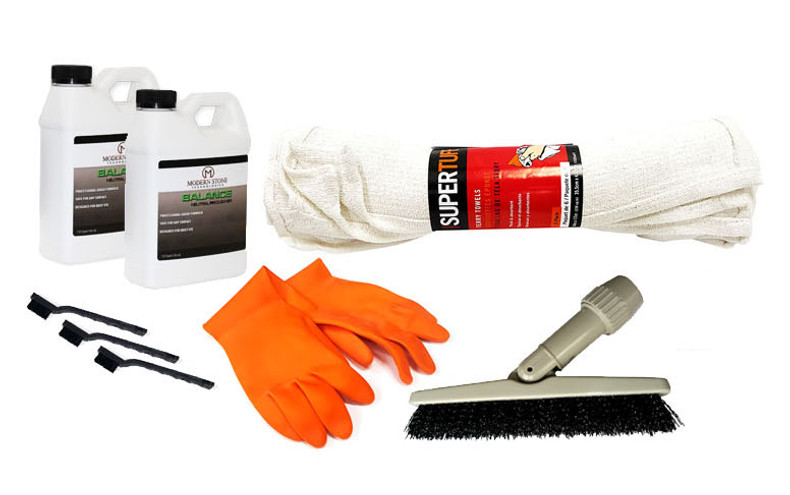
In this article we will discuss cleaning grout and tile, we will mostly be discussing the deep or thorough clean, but also on basic upkeep and quick cleanings. Tile comes in a variety of types (I’m not just talking look here) porcelain, ceramic, and even natural stone (natural stone is really a subject unto itself and we will cover that in future articles, however I will touch on a couple of do and don’ts), tiles are smooth to textured large to small and installed with sanded or non-sanded grouts and even grout had 50 different varieties! Point? There are a lot of variables, but here are the main principles.
I’m sure you all have notices that when you pour some water onto tile the first thing that happens is it runs right into the grout lines. Dirt does this too, and pretty much anything else that hits those tile floors, and that’s because they are the low spot of the floor. What that means is even if you grout is impervious to fight between Iron Man and Spider Man, it WILL STILL GET DIRTY. Sorry I know you didn’t want to hear that. The good news is if you have a great sealer in place, or you have used a stain resistant or even a stain proof epoxy grout, it’s still much easier to clean it back to a new a look, no super heroes needed.
Textured tiles present their own challenges to cleaning, obviously dirt and grime sticks in to the texture and gets in cracks or crevices of certain types of looks, but much easier to deal with than the grout, most of the time as become clean as a byproduct of cleaning your grout.
I can’t stress enough that sweeping and vacuuming are the best prevention to dirty grout and tile floors. Really it’s that easy. But we all know eventually you will need to mop, so here are some tips regarding wet maintenance cleaning.
- Vacuum. If at all possible suck the dirty water up into a vacuum. I personally use a Hoover Floor Mate, but shop vacs and the like work great too.
- If you must use a mop, use a string mop. If you use a string mop then do final clean water rinsing/mopping. Even better have a separate mop or mop head just for the final rinse.
- Let the cleaner do the work! Probably the most overlooked aspect is giving your cleaner some dwell time. Work smarter, not harder I always say.
- Lastly. Always rinse. I mean really, and I know there are tons of “no rinse” cleaners out there but when it comes to tile you will always leave a little dirt in the grout line if you don’t rinse (heck you probably will even if you do rinse) but you will lift more dirt and it will stay cleaner looking longer, so yes rinse.
For a deeper restorative clean, this will need to be done yearly at minimum, follow these steps.
- 1)Sweep, and vacuum
- 2)Spray or pour down cleaner. Make sure to work in manageable sections so the cleaner doesn’t dry, but put down enough to give good dwell time.
- 3)Scrub the grout lines thoroughly with a grout brush, medium to stiff bristles work best. TileToolsHQ https://www.tiletoolshq.com/cleaners/grout-brush-pivoting-brush-head/ works excellent for this.
- 4)Scrub the tiles. The texture of the tiles will impact how much scrubbing is necessary on the tiles themselves.
- 5)Vacuum up dirty water.
- 6)Rinse with clean water. Good saturation of clean water is key here. Either flood with a bucket or heavily saturated string mop.
- 7)Vacuum up rinse water.
- 8)By the time you have finished the entire floor the area you started in should be dry enough to tell what needs to be spot cleaned. Spot clean with a spray bottle of cleaner and a hand-held scrub brush. Rinse with clean water, and towel dry.
Once the grout and tile are squeaky clean always make sure to inspect your sealer and touch up or re-apply as necessary. If you haven’t sealed your grout this would be a perfect opportunity to do so!
If you tiles are natural stone be aware you need to use cleaners that are neutral PH, or specifically safe for natural stone. Also be careful to use tools that won’t scratch or harm the natural stone. If you have a stain on the stone itself try spot cleaning, but if that does not work you may want to give a poultice a shot, or even call in a professional if that still does not give satisfactory results.


